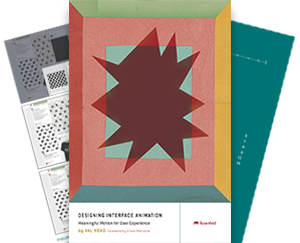As someone who spends a lot of time talking about UX animation, I’ve been asked more times than I’d like to admit if a poorly designed feature can be fixed by adding some surprise and delight. Usually this question comes from a genuine place of wanting to improve the experience of the product. But reaching straight for surprise and delight isn’t the quick and easy solution that it might seem like at first.
Attempting to add surprise and delight as a “fix” is the wrong approach. (And likely a big reason why the phrase surprise delight gets eye rolls from some people.) There’s no distracting your audience from something that’s broken or designed against their best interest. Which is why surprise and delight as a “fix” almost always fails.
Delight is a perfectly valid goal
Aiming for delight is a great goal to have, but the way to get there successfully is often misunderstood. Creating surprise and delight only works when it is build on top of a foundation of good functionality and trust. That’s the part that is so tempting to try and skip over because it’s often the harder part.
If the foundation isn’t there, your moments of delight are more likely to become moments of annoyance and frustration for your customers. And that’s (hopefully) the opposite of what you’re going for.
But there’s not skipping the foundations of solid performance and functionality
The foundations of solid performance, functionality, and useablility need to be in place before any amount of delight can truly be achieved. Aaron Walter’s hierarchy of user needs illustrates this well. When those foundations are in place the potential for designing something that is truly delightful is wide open. That’s where you can fully take advantage of what what surprise and delight can do.
